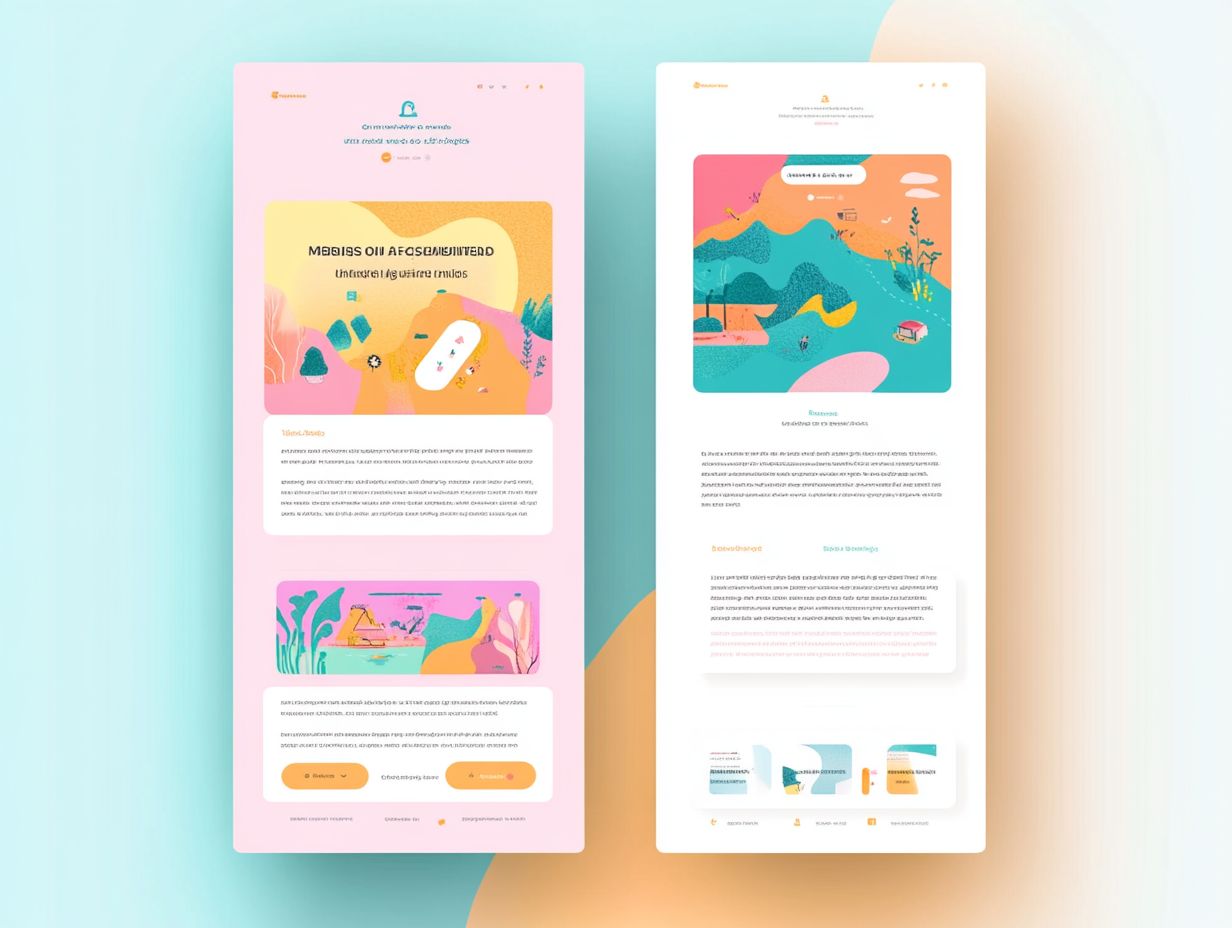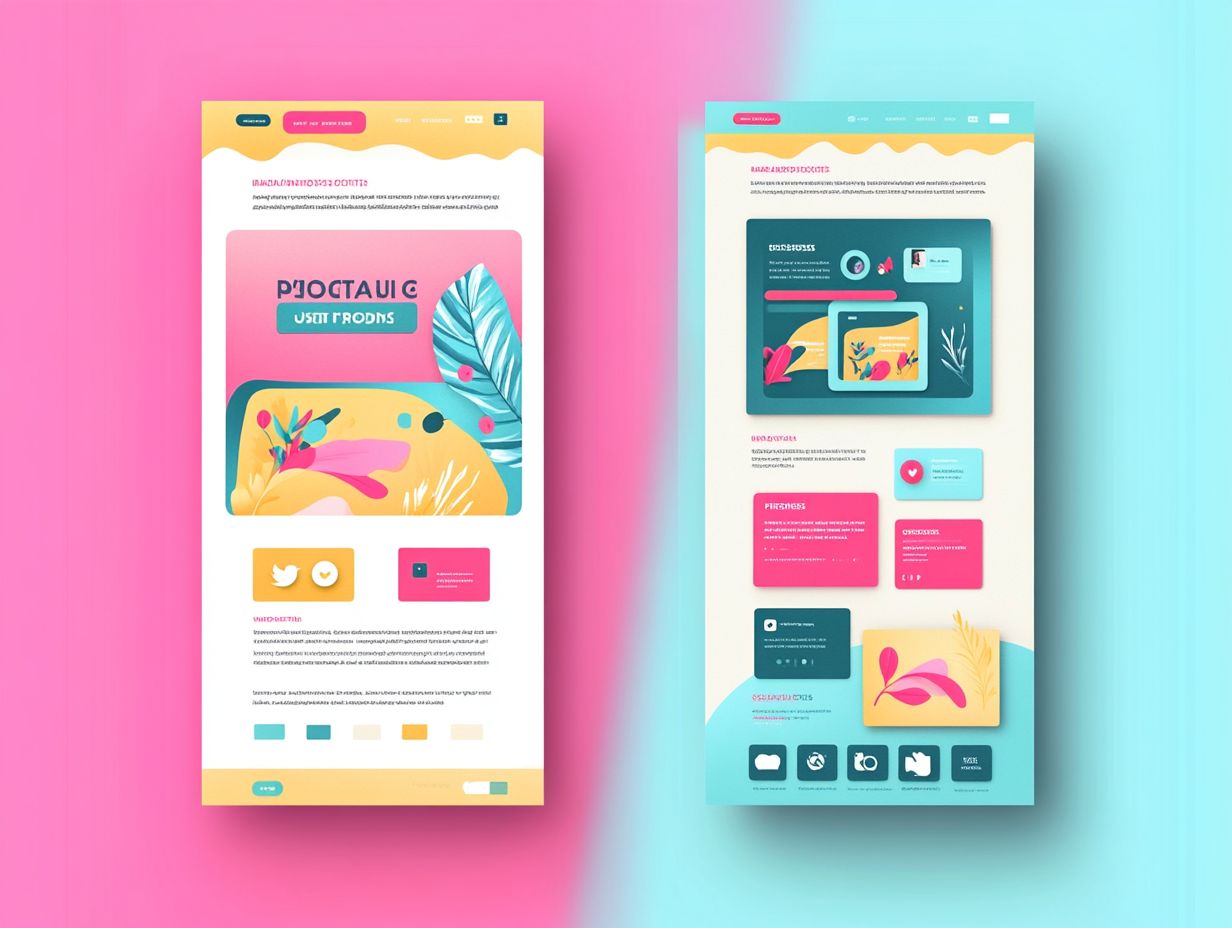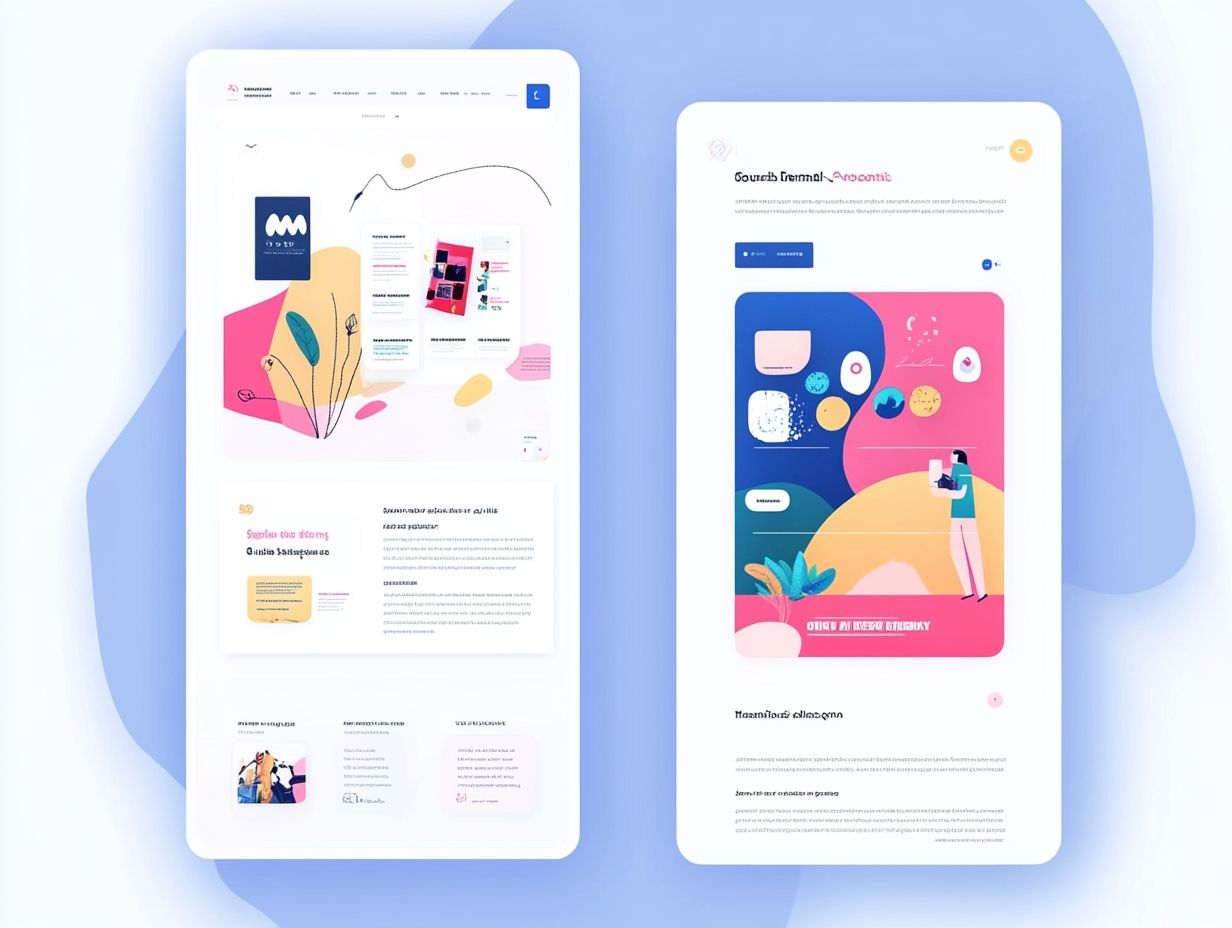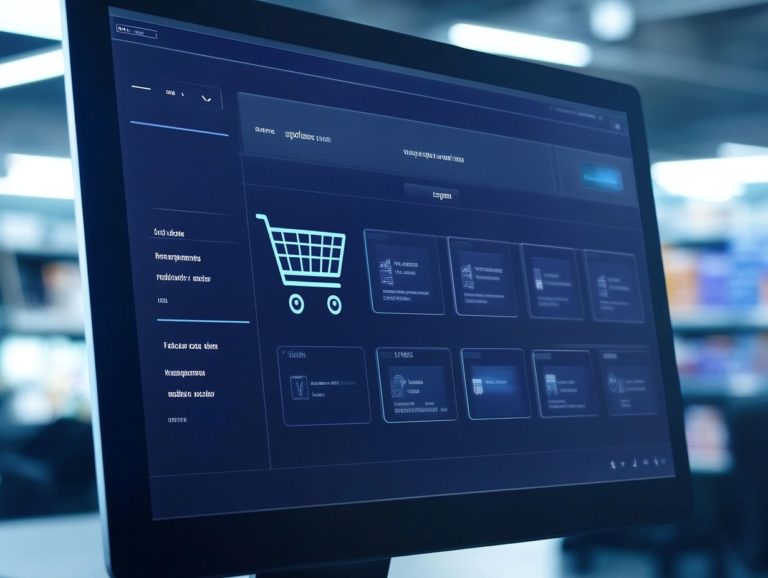How to Use Visuals for Higher Conversion Rates
In today s digital landscape, visuals stand out as powerful tools that can dramatically enhance your conversion rates. From striking images and engaging videos to informative infographics, the right visuals can captivate your audience and inspire them to take action.
This article delves into various types of visuals you can utilize, shares best practices for maximizing their impact, and guides you on how to measure their success. You will discover effective strategies for seamlessly integrating visuals into your marketing efforts for optimal results. Don t miss out on learning how to boost your conversion strategy today!
Contents
- Key Takeaways:
- Types of Visuals to Use
- Best Practices for Using Visuals
- How to Measure the Success of Visuals
- Integrating Visuals into Your Conversion Strategy
- Frequently Asked Questions
- What is the importance of using visuals for higher conversion rates?
- Are there specific types of visuals that work best for increasing conversion rates?
- How can I use visuals to build trust with potential customers?
- What role do colors play in using visuals for higher conversion rates?
- How should I incorporate visuals into my website or marketing materials for maximum impact?
- Can using visuals actually hurt conversion rates?
Key Takeaways:

- Use a variety of visuals such as images, videos, and infographics to capture your audience’s attention and increase conversion rates.
- Follow best practices, including using high-quality and relevant visuals, incorporating them into your landing pages and ads, and tracking metrics to measure their success.
- Integrate visuals into your overall conversion strategy to create a cohesive and impactful customer journey that drives conversions.
Why Visuals are Important for Conversions
Visuals are essential for elevating conversion rates across various marketing platforms, as they create a strong emotional bond with users. Effective visuals such as product videos, infographics, and user-generated content can profoundly impact a customer s decision-making process.
By using social proof, or customer testimonials, alongside engaging visuals, you can cultivate an appealing online presence that resonates with your target audience. This approach boosts website conversions, enhances customer experience, and creates a more compelling sales process.
Look at how successful online retailers use visuals to their advantage. They often employ striking images and dynamic video content to bring their products to life, making it easier for potential customers to envision the benefits. Brands like Warby Parker and Glossier have mastered the art of using high-quality visuals, not just to grab attention but to drive conversions through captivating storytelling and relatable imagery.
By integrating eye-catching graphics and immersive videos, these brands foster a deeper connection with consumers, encouraging them to engage further and ultimately make a purchase. Thus, the strategic use of visuals not only boosts user engagement but also amplifies the overall effectiveness of marketing campaigns.
Types of Visuals to Use
To truly maximize your website’s performance, it’s crucial to incorporate a diverse array of visual content that captivates users and boosts conversion rates. Visuals come in many forms think of stunning product images, engaging videos, informative infographics, and compelling user-generated content that aligns with your audience’s preferences.
Each visual type plays a distinct role in the marketing ecosystem, enhancing customer engagement and crafting personalized experiences that can significantly elevate your e-commerce sales.
Images, Videos, Infographics, and More
Each type of visual asset whether it s product images, videos, or infographics is essential in crafting a captivating storytelling experience for you. These visual elements grab your attention and create a visual hierarchy that guides your journey through the content.
For example, a clothing brand that uses high-resolution images showcases the fabric’s texture and color accuracy, ensuring the product shines in its best light. Product videos, especially those featuring genuine customer testimonials, can greatly enhance trust and credibility, much like the successful campaigns from companies like Apple.
Infographics are an excellent way to present statistics about product benefits in a visually appealing way, making them highly shareable across your favorite social media platforms. Ultimately, these visual assets do more than just look good; they significantly elevate your overall experience and engagement.
Start integrating visuals into your strategy now and watch your conversions soar!
Best Practices for Using Visuals

To truly harness the power of visuals in your marketing strategy, it s crucial to adhere to best practices that amplify both impact and effectiveness. This involves selecting visuals that resonate with your brand identity, maintaining a clear visual hierarchy, and ensuring that every piece of visual content blends seamlessly with your messaging.
Integrating compelling calls-to-action can effectively guide users towards desired actions, enhancing engagement and driving higher conversion rates on landing pages and social media platforms.
Tips for Maximizing Impact and Effectiveness
To truly maximize the impact and effectiveness of your visual content, focus on what your audience prefers. Optimize your images and videos for various media platforms.
Tailoring your visuals for specific social media channels like Pinterest and Instagram can significantly boost user engagement and conversion rates.
By utilizing high-quality images, 360-degree visuals, and user-generated content, you can forge an emotional connection that enhances customer experiences and builds trust through social proof.
Consider the examples set by brands like Nike and Airbnb, who expertly curate their visuals to align with their brand narratives. Nike, for instance, employs vibrant, action-packed visuals on Instagram that inspire viewers.
Meanwhile, Airbnb showcases stunning, authentic images of unique stays that entice travel enthusiasts. Employing techniques such as image compression for faster loading times and using the right sizes for each platform ensures your content displays optimally.
This creates a seamless user experience. Brands prioritizing these strategies typically enjoy higher visibility and engagement, underscoring the importance of understanding where and how your audience consumes visual content.
How to Measure the Success of Visuals
Want to know how your visuals perform? Track these key metrics that indicate user engagement and overall website performance, particularly in the context of conversion optimization.
Key performance indicators (KPIs) like click-through rates, time spent on landing pages, and social media shares offer valuable insights into how well your visuals resonate with your audience.
Analyzing customer interactions with these visual elements allows you to pinpoint what drives higher conversion rates, ultimately informing your future marketing strategies.
Metrics to Track and Analyze
To evaluate the effectiveness of your visual content, track and analyze key metrics such as engagement rates, conversion rates, and bounce rates. Engagement rates reveal how well users connect with your visuals, while conversion rates shed light on the effectiveness of your calls-to-action.
Bounce rates can indicate whether your visuals entice users to stay on a page and explore further, revealing opportunities for refinement.
Diving into these metrics uncovers invaluable insights into your audience’s behavior and preferences. Tools like Google Analytics enable you to monitor engagement rates by tracking how long visitors spend interacting with your images or videos.
If you notice that high-quality infographics consistently drive up conversion rates, now is the perfect time to incorporate more engaging infographics into your strategy!
Utilizing A/B testing allows you to optimize your visuals based on real-time data, ensuring that elements resonate more effectively with your target audience. Additionally, identifying peak engagement times can inform when to release your visual content, enhancing its overall impact.
Integrating Visuals into Your Conversion Strategy

Integrating visuals into your conversion strategy is crucial. It helps craft marketing campaigns that connect with your audience. Use captivating visuals on landing pages, ads, and other materials to enhance the customer experience.
By using content created by your customers and ensuring your visuals align with your brand identity, you can create personalized experiences that boost engagement and drive higher conversion rates across all platforms.
Incorporating Visuals into Landing Pages, Ads, and More
Incorporating visuals into your landing pages and ads is a powerful strategy that can significantly boost your visual marketing and drive higher conversion rates. When you use high-quality images and compelling visuals, you capture user attention effectively. Pair that with strategically placed buttons or links that encourage users to take action, and you’ll guide customers toward the desired actions you want them to take.
Adding user-generated content and testimonials to your landing pages injects authenticity and social proof, elevating engagement and conversions even further.
Maximize your visuals’ impact by focusing on layout and design. For example, a grid format can help you organize elements harmoniously, ensuring that key visuals stand out while maintaining an aesthetically pleasing flow. Using contrasting colors for buttons or important text can make them pop and draw the eye.
Look at successful brands like Airbnb and Dropbox. They leverage captivating images that resonate with their target audience, effectively boosting their conversion rates by fostering trust and evoking emotions.
Frequently Asked Questions
What is the importance of using visuals for higher conversion rates?
Visuals can significantly impact a consumer’s decision-making process and increase the likelihood of a conversion. Learning how to utilize video marketing for conversions can further enhance your strategy, as they grab attention, communicate information effectively, and evoke emotions—all crucial for driving conversions.
Are there specific types of visuals that work best for increasing conversion rates?

While it ultimately depends on your target audience and product or service, studies have shown that high-quality images, videos, and infographics tend to be the most effective in driving conversions. Experiment with different types of visuals to see what resonates best with your audience.
How can I use visuals to build trust with potential customers?
Visuals help establish credibility and trust with potential customers by showcasing your product or service in action, displaying positive customer testimonials, and highlighting any awards or certifications your business has received. This can convince hesitant customers to convert.
What role do colors play in using visuals for higher conversion rates?
Colors evoke specific emotions and influence consumer behavior, making them a crucial aspect of using visuals for higher conversion rates. Consider the colors associated with your brand and product, as well as colors known to drive conversions, such as red, orange, and green.
How should I incorporate visuals into my website or marketing materials for maximum impact?
Integrate visuals strategically throughout your website and marketing materials to support your messaging and guide consumers toward conversion. Use visuals to highlight key features and benefits, break up text, and create a visually appealing overall design.
Can using visuals actually hurt conversion rates?
While visuals can be powerful tools for driving conversions, they can negatively impact if not used correctly. Too many visuals, poor-quality images, or irrelevant visuals can deter potential customers. Use visuals thoughtfully and purposefully to avoid hindering your conversion rates.






